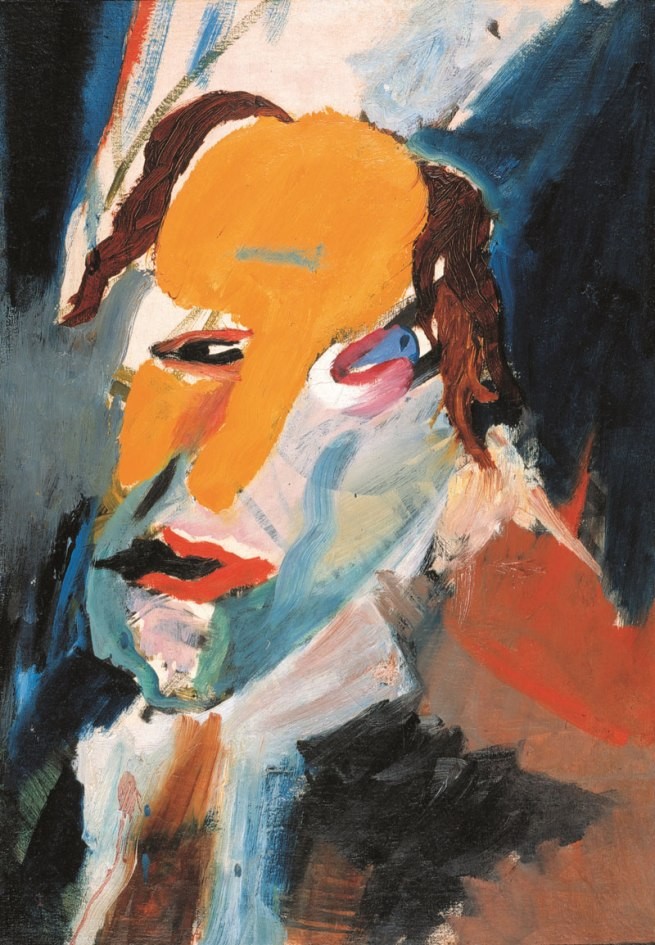Expressionism - Trauma and Taboo
A New Art for a New Society
11 Nov 2017 - 11 Mar 2018

A New Art for a New Society
11 November 2017 - 11 March 2018
With the exhibition «Expressionism – Trauma and Taboo. A New Art for a New Society» the Kunsthalle Bielefeld recalls the anti-bourgeois impetus inherent in many works of expressionist art. Once scandalous outsiders, the Expressionists today are socially acceptable, their paintings worth millions. It is belittling to consider them merely examples of picturesque bohemianism, colorful idylls, and prospects of the good old days, or sought-after decorative, reliable investments. Their controversial elements are in danger of disappearing into complacency.
«We don’t want to entertain the bourgeoisie. Treacherously, we want to demolish their comfortable, solemn, lofty worldview», Herwarth Walden’s Sturm claimed in 1910; the magazine was one of the most prominent publications for Expressionism. This is a new era’s declaration of war upon the convictions and values of the old, with art being the means of battle.
«Expressionism – Trauma and Tabu. A New Art for a New Society» assembles around two hundred works of art, including high-quality loans from private collections as well as the collections of the Deutsche Bank, the Staatliche Museen zu Berlin, the Kirchner Museum in Davos, the Kunsthalle Bremen, the Brücke Museum in Berlin, and others.
The exhibition is supported by the Stiftung der Sparkasse Bielefeld. The Ernst von Siemens Kunststiftung is the catalogue sponsor.
«With this show, the Kunsthalle Bielefeld succeeds in capturing a sense of the time period, shedding light on Expressionism from a new and different perspective. Prominent Expressionist works from its own collection, supplemented by loans—some of them on display for the first time ever—splendidly illuminate the socio-cultural background and the tensions of the era. The Ernst von Siemens Kunststiftung has therefore decided to provide support for a companion catalogue», as Dr. Martin Hoernes, General Secretary of the Ernst von Siemens Kunststiftung, is pleased to announce.
The early years of the twentieth century comprised an era of great challenges and existential insecurity, marked by industrialization, the misery of the working classes, rural exodus, teeming metropolises, and housing shortages. The backward social order of the Wilhelmine imperial realm, based on feudal and militaristic ideals, was hopelessly overwhelmed with the rapid changes that occurred, and the collapse came with the outbreak of World War I in summer 1914. Under these auspices, Expressionism was the form of art that forged the way for rebellion in the cultural fields; after 1919 it became even more vehement under the new political auspices.
The young artists, poets, actors, and dancers—most of them the sons and daughters of the bourgeoisie—experienced middle-class life as traumatic and rebelled against rigid standards and hypocritical conventions. The artists broke taboos, took drugs, put an end to prudery and the renunciation of instinctual urges in order to draw power for their art from the forces of sexuality, instead of repression and neuroses. With lives based loosely on Nietzsche and encouraged by Freud, they lived to «re-evaluate all values», on the search for a self-determined existence in a society without class limitations—something that was nothing more than a utopian notion at that time.
Because the ideas that came from Expressionism and the questions it posed with blunt candor remain relevant and important to this day, the show recalls the virulence of this «trend», and the intentions behind it: internationalism, individualism, peaceful coexistence, and social tolerance are still on the agenda even now, a century later.
The extensive program of events accompanying the exhibition includes Expressionist film, dance, and literature in its theme. Two evenings of concerts, featuring the Cooperativa Neue Musik and the Bielefeld Philharmonic, will be devoted to Expressionism and music.
In cooperation with the University of Bielefeld, an art and science festival on the theme of identity will take place from January 17-19, 2018. Here, Jutta Hülsewig-Johnen will lecture on the topic of to what extent the question of individual identity was essential to the Expressionists and how it was articulated in their paintings.
List of artists: Max Beckmann, Rudolf Belling, Otto Dix, Conrad Felixmüller, Otto Gleichmann, George Grosz, Erich Heckel, Jacoba van Heemskerck, Walter Jacob, Alexej von Jawlensky, Ernst Ludwig Kirchner, Emmy Klinker, Oskar Kokoschka, Else Lasker-Schüler, Wilhelm Lehmbruck, August Macke, Ludwig Meidner, Paula Modersohn-Becker, Otto Mueller, Emil Nolde, Max Pechstein, Hans Richter, Christian Rohlfs, Karl Schmidt-Rottluff, Jakob Steinhardt, Hermann Stenner, Georg Tappert, William Wauer, Marianne von Werefkin, Gert H. Wollheim
